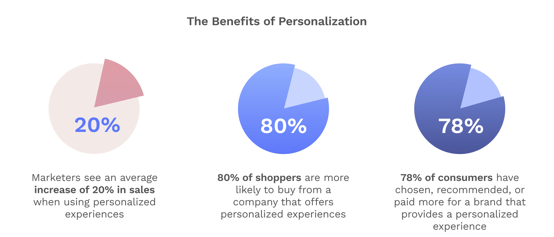Harnessing Big Data in Retail: 7 Innovative Approaches for 2024
Harnessing Big Data in Retail: 7 Innovative Approaches for 2024
As we step into 2024, the power of big data in retail continues to revolutionize how businesses understand their customers, manage their operations, and forecast trends. From predicting consumer behavior to personalizing shopping experiences, big data proves to be an essential asset that drives innovation and efficiency.
In this article, we'll explore seven innovative approaches to harness big data in retail that can transform your business practices and help you thrive in the competitive market.
1. The Power of Predictive Analytics
Predictive analytics is revolutionizing the retail industry, empowering businesses to anticipate consumer needs and market demands with unparalleled precision. By analyzing trends in historical and real-time data, retailers can forecast future consumer behaviors and adapt their strategies to meet these expectations.
This proactive approach enables businesses to optimize their inventory levels, ensuring that popular items are readily available while avoiding the pitfalls of overstocking. As retailers harness the predictive power of big data, they not only enhance customer satisfaction, but also streamline operations, reduce costs, and increase overall profitability.
2. Personalization at Scale
In an era where consumers expect tailored shopping experiences, big data is the key to delivering personalization at scale. By analyzing extensive datasets on consumer behavior, preferences, and purchasing history, retailers can customize their offerings to meet the individual needs of each customer.
A recent survey highlights that 80% of shoppers are more likely to buy from companies that offer personalized experiences.

Big data enables retailers to craft personalized marketing messages, recommend products based on past purchases, and provide special offers that resonate with individual preferences. As a result, personalization not only enhances the customer experience but also significantly boosts sales and brand loyalty.
3. Real-time Decision Making
As consumer behaviors shift and market dynamics evolve, the ability to make informed decisions in real-time becomes invaluable.
Retailers equipped with real-time analytics can dynamically adjust pricing, promotions, and inventory distribution based on current store traffic and online engagement metrics. This agility not only maximizes profitability, but also enhances customer satisfaction by ensuring that popular products are always in stock and promotions are timely and relevant.
The integration of real-time data analytics enables businesses to operate more responsively, making adjustments that are felt immediately across the supply chain and directly at points of sale.
4. Integrating AI for Enhanced Customer Insights
Artificial intelligence reshapes how retailers gather and interpret customer data, offering insights that were previously unattainable.
By analyzing patterns in vast amounts of transactional data and customer interactions, AI technologies can identify emerging trends and predict future buying behaviors with remarkable accuracy. This capability allows retailers to optimize their marketing strategies, tailor product offerings, and even predict and manage inventory needs before they become critical.
Moreover, AI-driven insights help businesses understand the nuances of customer preferences, enabling them to craft experiences that resonate deeply and personally with their audience. This strategic use of AI not only drives sales, but also builds a more loyal customer base by continuously meeting and exceeding customer expectations.
5. Optimizing Supply Chain with IoT
The integration of the Internet of Things (IoT) in retail supply chains has significantly enhanced inventory and logistics management, offering real-time tracking and predictive maintenance capabilities that boost operational efficiency and reduce costs. IoT devices enable unprecedented visibility throughout the supply chain, from the warehouse to delivery, ensuring products arrive in optimal condition and reducing return rates.
Adding a strategic layer to this technology, a Gartner survey reveals that top-performing supply chain organizations heavily invest in AI and machine learning, focusing on productivity to drive business momentum.
These high performers are adopting AI/ML at more than twice the rate of their peers, using these technologies to automate and optimize processes that leverage supply chain data for improved decisions and operational outcomes.

This addition not only highlights the role of IoT, but also emphasizes the competitive advantage gained through advanced AI applications, providing a comprehensive view of how technological advancements are reshaping the retail industry.
6. Sustainability Through Data
Retailers are now using data analytics to optimize energy use in stores and distribution centers, significantly reducing their carbon footprint.
For example, data-driven algorithms can adjust lighting and heating based on store occupancy and weather conditions, leading to substantial energy savings. Furthermore, analytics can enhance waste management by tracking waste generation and recycling rates, helping retailers to identify areas where they can reduce waste and improve sustainability practices.
By intelligently utilizing data, retailers not only comply with increasing regulatory demands for sustainability, but also appeal to eco-conscious consumers who prioritize environmental responsibility in their purchasing decisions.
7. Augmented Reality and Virtual Reality in Retail
Augmented Reality (AR) and Virtual Reality (VR) are revolutionizing retail by enhancing how consumers interact with products.
AR allows customers to visualize products in their own space, such as visualizing how furniture fits in a room, which increases confidence in purchasing decisions and reduces return rates. For instance, IKEA’s AR app significantly improves customer satisfaction by enabling this feature.
Similarly, VR creates immersive shopping experiences, allowing customers to browse virtual stores as if they were physically present. This not only enhances engagement, but also extends the retailer’s reach globally, transcending geographical barriers.
These technologies are proving vital in enhancing conversion rates and enriching the customer experience. As AR and VR evolve, they continue to transform the retail landscape by blending digital innovation with personalized shopping experiences, setting new standards for customer interaction and operational efficiency.
Future-Proof Your Retail Strategy Today
The integration of advanced technologies like predictive analytics, AI, and IoT is fundamentally transforming the retail industry. These tools empower retailers to predict consumer needs, personalize experiences at scale, and make real-time decisions that enhance operational efficiency and customer satisfaction. By embracing these innovations, retailers can not only meet modern consumer expectations, but also drive significant business growth.
Ready to leverage cutting-edge technologies in your retail operations? Hypersonix’s predictive analytics, AI-driven insights, and IoT solutions are designed to optimize your business strategies and drive growth.
Explore Hypersonix’s solutions today and place your organization at the forefront of innovation and profitability. Book a demo and elevate your retail performance!
.png?width=610&height=239&name=Frame%201%20(8).png)


.png)



